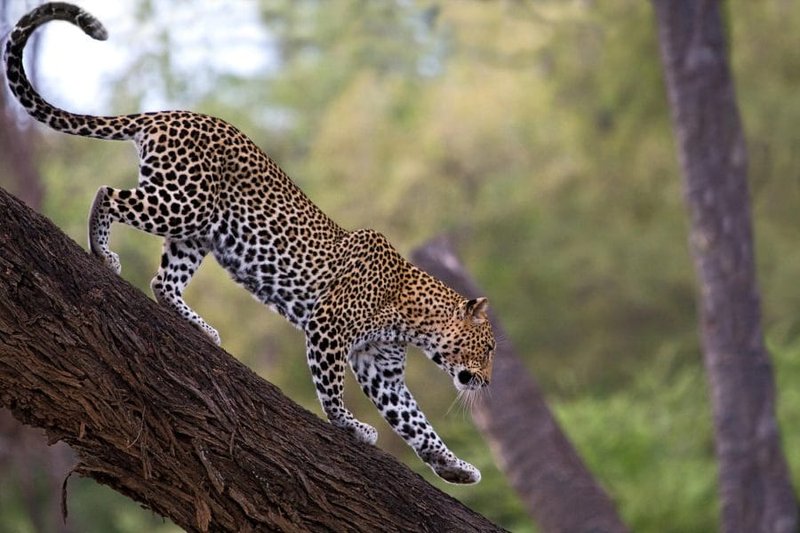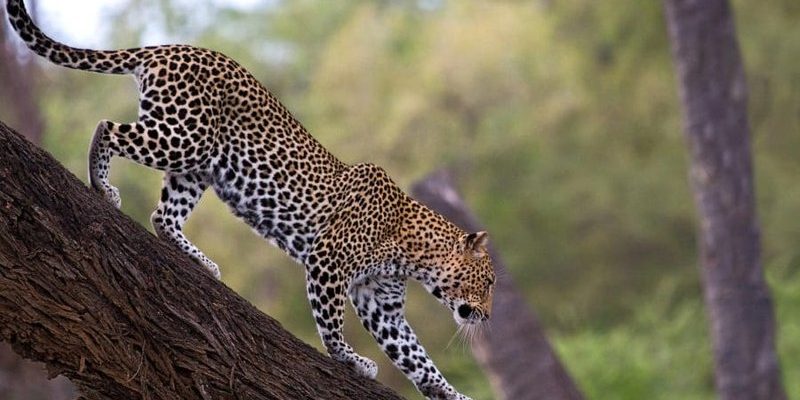
Think of a leopard as a ninja in the wild—stealthy, agile, and incredibly resourceful. From arid deserts to lush forests, these cats are equipped with amazing traits that help them make the most out of their surroundings. Join me as we delve into the fascinating world of African leopards and uncover the secrets behind their survival in extreme habitats.
Physical Adaptations for Survival
Leopards are built for resilience. Their bodies are perfectly designed to help them endure the challenges of their environment. With strong limbs and exceptionally flexible spines, they can leap up to 10 feet in the air! This ability allows them to escape threats and hunt effectively. Their powerful legs give them the strength to climb trees, where they often stash their kills to avoid competitors like lions and hyenas.
Their fur isn’t just for looks, either. The beautiful rosettes on their coat serve as natural camouflage, helping them blend into their surroundings, whether it be the dappled light of a forest or the golden grasses of the savannah. This clever disguise makes it harder for both prey and predators to spot them. After all, it’s easier to survive when nobody knows you’re around!
Another remarkable adaptation is their keen eyesight and hearing. Leopards can see well in low light, making them excellent nocturnal hunters. They can hear even the softest sounds, helping them detect potential prey or threats. With these traits combined, leopards have a significant advantage in the wild, allowing them to thrive where many other animals might fail.
Hunting Strategies: Stealth and Skill
When it comes to finding food, leopards are like skilled hunters. They rely on stealth and patience. Instead of chasing their prey over long distances like lions, leopards use a different tactic: they stalk. By quietly creeping through the underbrush, they can get as close as possible to their target before making a powerful leap.
Leopards are opportunistic eaters, meaning they’ll take advantage of whatever’s available. From small rodents to larger animals like antelopes, their diet is diverse. This flexibility is crucial for survival, especially in harsh environments where food sources can be unpredictable. For instance, during a dry season, water and prey might be hard to find, but leopards have the skills to adapt their hunting habits accordingly.
Another fascinating aspect of their hunting strategy is their ability to climb trees. Once they’ve caught their meal, leopards often haul their prey up to a branch to keep it safe from scavengers. This behavior not only protects their hard-earned meal but also shows their incredible strength and agility. It’s a smart move that speaks to their resourcefulness in the wild.
Water Conservation and Adaptability
Living in harsh environments also means being smart about water. African leopards are adept at surviving with minimal water intake. They can often get the moisture they need from their prey, which helps them thrive in dry areas where water is scarce. This ability can be a lifesaver during droughts when water sources dry up.
Leopards are also known for their adaptability. They can change their habits based on the season and environment. For example, if they find themselves in an area with abundant prey but limited cover, they might adapt their hunting style or territory range. This adaptability is crucial and allows them to maintain a foothold even when conditions change dramatically.
By roaming different habitats—grasslands, forests, and even mountain ranges—leopards broaden their chances of finding food and water. It’s almost like they have a built-in GPS for survival, constantly recalibrating based on their surroundings.
Social Behavior and Territory
When you think of wild cats, you might picture them as solitary creatures, and that’s mostly true for leopards. They tend to be solitary animals, only coming together during mating season. However, those alone times are strategic, as leopards establish territories that they fiercely defend. These territories can be quite large, depending on the availability of prey and resources.
Leopards mark their territory using scent markings, which inform other leopards of their presence. This helps reduce confrontations and allows them to maintain their space. It’s like posting a “No Trespassing” sign, but much more subtle. By keeping their distance from other leopards, they can avoid conflicts while hunting in their area.
Interestingly, leopards are known to be somewhat elusive. They often avoid direct interactions with other predators, including other big cats. This behavior minimizes competition and increases their chances of finding food without the hassle of fighting for territory.
Challenges and Conservation
Despite their incredible adaptations, African leopards still face serious challenges in the wild. Habitat loss due to human encroachment, poaching, and climate change all threaten their survival. As their natural environments shrink, so do their hunting grounds and resources, putting them at a higher risk of extinction.
Conservation efforts are crucial to ensure their survival. Organizations and local communities are working together to protect habitats and create safe corridors for leopards to roam. Education plays a big role too; teaching people about the importance of leopards in the ecosystem helps reduce human-wildlife conflicts.
By prioritizing conservation, we can help secure a future for these magnificent creatures. It’s like ensuring that every piece of a puzzle is in place, so the picture remains whole.
The Importance of African Leopards in the Ecosystem
Leopards are not just beautiful animals; they play a vital role in their ecosystems. As apex predators, they help maintain the balance of animal populations. By hunting herbivores, they prevent overgrazing, which can lead to ecosystem degradation. In this way, leopards contribute to a healthy and thriving environment.
Their presence indicates a healthy ecosystem and can help researchers gauge the overall health of wildlife in an area. When leopards are thriving, it often means that the entire ecosystem is balanced, giving other species a better chance of survival.
Additionally, leopards can serve as indicators of biodiversity. Their decline can signal broader issues affecting wildlife, prompting conservation efforts that benefit multiple species. Protecting leopards, therefore, is about safeguarding entire habitats and the rich diversity of life they support.
African leopards are more than just beautiful animals; they are symbols of resilience and adaptability in the wild. From their impressive physical adaptations to their strategic hunting techniques, these creatures have mastered the art of survival in harsh environments. However, they also remind us of the fragile balance of nature and the importance of conservation.
As we learn more about these magnificent creatures and the challenges they face, we can better appreciate their role in our world. By supporting conservation efforts, we can help ensure that future generations will get to witness the incredible spirit of African leopards. So next time you think of a leopard, remember that there’s a lot more going on behind those gorgeous spots!

